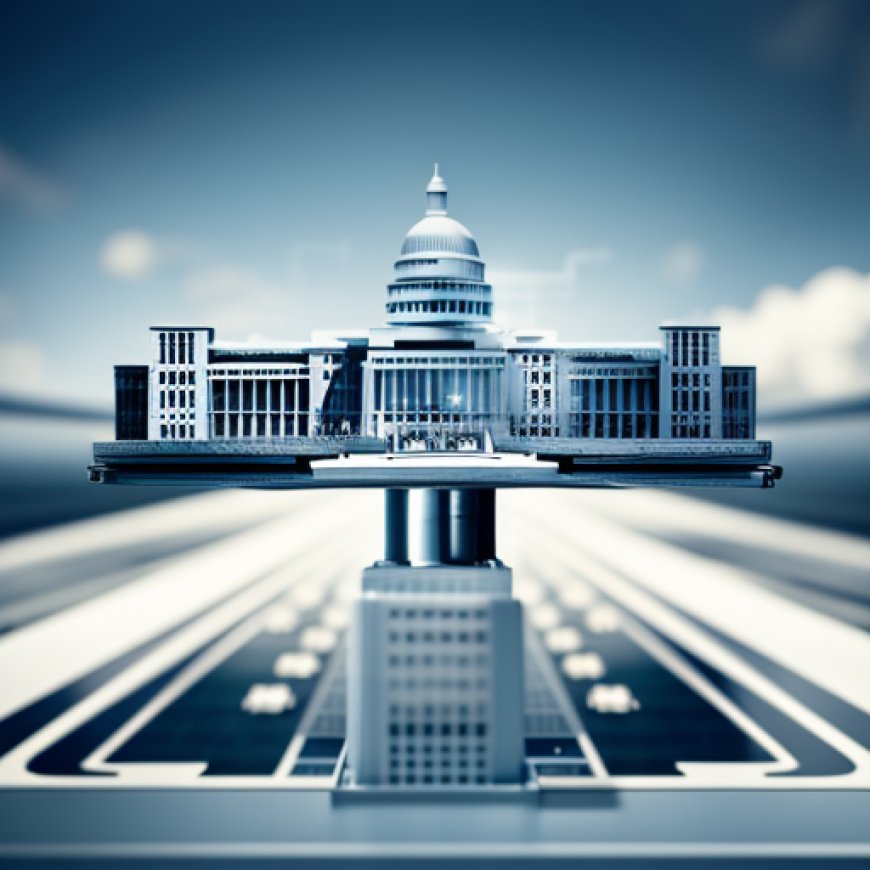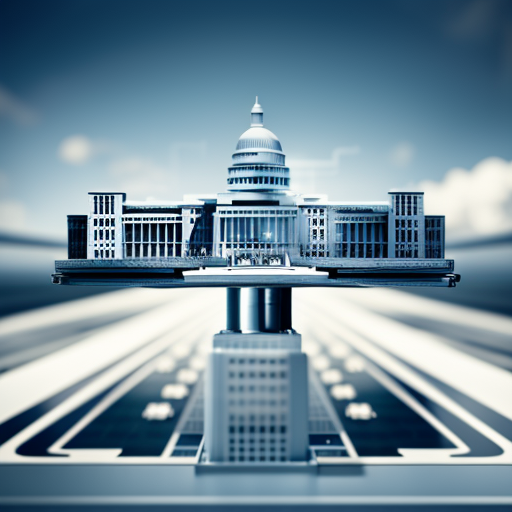U.S. Government Plans to Leverage P3s to Make Federal Buildings More Energy Efficient | JD Supra
U.S. Government Plans to Leverage P3s to Make Federal Buildings ... JD Supra


Introduction
As the nation’s largest energy consumer, the U.S. federal government plans to curb greenhouse gas emissions across its expansive portfolio of more than 350,000 federal buildings.[1] In a pioneering move, the Biden administration and Department of Energy (DOE) recently announced the Climate Smart Buildings Initiative (CSBI).[2] This bold initiative aims to upgrade federal buildings across the U.S. with emerging and sustainable technologies in an effort to meet the Biden administration’s Federal Building Performance Standard, which sets an ambitious goal to cut energy use and electrify equipment and appliances in 30% of the building space owned by the federal government by 2030.[3]
Climate Smart Buildings Initiative
The CSBI, announced on August 3, 2022, aims to leverage P3s to modernize federal buildings and cut greenhouse gas emissions. Through this initiative, the government will dramatically expand its partnership with the private sector to upgrade existing federal buildings — paying for today’s needed renovations with tomorrow’s energy savings without requiring upfront taxpayer funding.
By setting and meeting emissions reduction targets for buildings, the CSBI is expected to catalyze more than $8 billion of private sector investment by 2030 to modernize facilities through ESPCs and UESCs.[4] The initiative is expected to achieve up to 2.8 million metric tons of greenhouse gas reductions annually by 2030, which is the equivalent of removing 600,000 gas-powered cars from the road.[5] Further, the CSBI is expected to increase investments from performance contracts from a low of $251 million in fiscal year (FY) 2021, to a sustained $1.2 billion per year by 2030, a fivefold increase. [6]
The CSBI includes:
- Establishing agency emission reduction targets delivered through performance contracting. The Biden administration will provide sustained leadership between today and 2030 to support federal agencies to set, track, and deliver on targets for cutting building emissions. [7]
- Leveraging $250 million in funding from the Infrastructure Investment and Jobs Act (IIJA). The DOE’s Assisting Federal Facilities with Energy Conservation Technologies (AFFECT) program will provide additional funding to promote innovative decarbonization strategies through performance contracting. [8]
- Leveraging $975 million in funding from the Inflation Reduction Act (IRA). On June 20, the U.S. General Services Administration (GSA) announced plans to contribute to the CSBI by allocating $975 million in IRA funding to upgrade federal buildings across the U.S. with emerging and sustainable technologies.[9]
Energy Savings Performance Contracts: A Win-Win Partnership Model
To further enhance the energy efficiency of federal buildings, ESPCs offer an innovative and mutually beneficial partnership model. ESPCs allow federal agencies to implement energy efficiency upgrades without upfront capital costs, paving the way for significant energy savings and sustainability improvements.
Under ESPCs, federal agencies enter into contracts with Energy Service Companies (ESCOs) that provide the necessary expertise, financing, and technical know-how.[10] The procurement process begins with the agency accepting initial proposals and qualifications from multiple ESCOs; then, once the agency chooses one proposal, the chosen ESCO conducts a comprehensive energy audit and identifies improvements that will save energy at the facility.[11] Central to the ESPC framework is the ESCO’s commitment to achieving “life cycle cost-effectiveness,” that is, that the benefits derived from the energy improvements meet or exceed total costs over the life of the contract.[12]
Notably, the agency incurs minimal to no upfront expenses, as the ESCO designs and constructs a project that meets the agency’s needs and arranges financing to pay for it. The ESCO guarantees that the improvements will generate savings sufficient to pay for the project over the term of the contract, with contract terms of up to 25 years. Thereafter, the agency conducts an annual energy audit, and annual payments to the ESCO are made from the realized savings generated from the energy-saving measures. After the contract ends, all additional cost savings accrue to the agency.[13]
ESPCs offer numerous advantages to federal agencies and taxpayers. By leveraging private sector investments, federal agencies can implement energy efficiency upgrades without the need for upfront capital costs. This not only relieves budgetary constraints but also allows agencies to allocate resources to other important priorities. Furthermore, ESPCs stimulate job creation in the renewable energy and energy efficiency sectors, contributing to economic growth and supporting local communities. By investing in energy-saving measures and modernizing federal buildings, ESPCs not only reduce greenhouse gas emissions but also improve the overall environmental performance of these buildings.
Utility Energy Services Contracts: Collaborating with Utilities for Energy Efficiency
In addition to ESPCs, federal agencies have another avenue for implementing energy efficiency improvements in their buildings: UESCs. UESCs involve partnerships between federal agencies and utility service providers to design and implement energy conservation measures.[14] These measures can range from lighting retrofits to the integration of renewable energy systems. As opposed to ESPCs, which are competitively procured, it is common for federal agencies to justify sole source procurements for UESCs when there is one serving utility.[15] As a result of this streamlined procurement process, UESCs may be executed faster and with less regulatory burden.
In a UESC arrangement, the utility company, leveraging its resources and technical expertise, first performs a comprehensive analysis of a proposed energy efficiency project.[16] This analysis aims to quantify the potential energy and financial savings the federal agency stands to gain. In doing so, the utility company provides a projected benchmark for the lifetime cost-effectiveness of the project. However, unlike ESPCs, a UESC arrangement does not require the utility company to guarantee savings.[17]
A key attribute of a UESC is the utility company’s commitment to absorb most, if not all, of the initial costs of the project. This allows federal agencies to initiate energy efficiency projects without incurring significant upfront costs. In addition, the utility company formulates a financing plan which enables the federal agency to repay the project costs over time, using appropriated funds, the savings accrued from reduced utility bills, or a combination of the two.[18] Upon implementation of the energy efficiency project, the federal agency is obligated to repay the utility company in line with the financing plan. Because repayment is achieved through
SDGs, Targets, and Indicators
1. Which SDGs are addressed or connected to the issues highlighted in the article?
- SDG 7: Affordable and Clean Energy
- SDG 9: Industry, Innovation, and Infrastructure
- SDG 11: Sustainable Cities and Communities
- SDG 13: Climate Action
The issues highlighted in the article are connected to these SDGs as they focus on improving energy efficiency, reducing greenhouse gas emissions, and promoting sustainable technologies in federal buildings.
2. What specific targets under those SDGs can be identified based on the article’s content?
- SDG 7.3: By 2030, double the global rate of improvement in energy efficiency
- SDG 9.4: By 2030, upgrade infrastructure and retrofit industries to make them sustainable, with increased resource-use efficiency and greater adoption of clean and environmentally sound technologies and industrial processes
- SDG 11.6: By 2030, reduce the adverse per capita environmental impact of cities, including by paying special attention to air quality and municipal and other waste management
- SDG 13.2: Integrate climate change measures into national policies, strategies, and planning
The article mentions the goal of cutting energy use and electrifying equipment and appliances in federal buildings by 30% by 2030. This aligns with the targets mentioned above.
3. Are there any indicators mentioned or implied in the article that can be used to measure progress towards the identified targets?
- Reduction in energy use in federal buildings
- Increase in the adoption of sustainable technologies
- Reduction in greenhouse gas emissions
- Increase in private sector investment in modernizing facilities
- Creation of jobs in the renewable energy and energy efficiency sectors
The article mentions that the Climate Smart Buildings Initiative aims to achieve reductions in energy use, greenhouse gas emissions, and increase private sector investment. These indicators can be used to measure progress towards the identified targets.
Table: SDGs, Targets, and Indicators
| SDGs | Targets | Indicators |
|---|---|---|
| SDG 7: Affordable and Clean Energy | 7.3: By 2030, double the global rate of improvement in energy efficiency | – Reduction in energy use in federal buildings – Increase in the adoption of sustainable technologies |
| SDG 9: Industry, Innovation, and Infrastructure | 9.4: By 2030, upgrade infrastructure and retrofit industries to make them sustainable, with increased resource-use efficiency and greater adoption of clean and environmentally sound technologies and industrial processes | – Increase in private sector investment in modernizing facilities – Creation of jobs in the renewable energy and energy efficiency sectors |
| SDG 11: Sustainable Cities and Communities | 11.6: By 2030, reduce the adverse per capita environmental impact of cities, including by paying special attention to air quality and municipal and other waste management | – Reduction in greenhouse gas emissions |
| SDG 13: Climate Action | 13.2: Integrate climate change measures into national policies, strategies, and planning | – Reduction in greenhouse gas emissions |
Behold! This splendid article springs forth from the wellspring of knowledge, shaped by a wondrous proprietary AI technology that delved into a vast ocean of data, illuminating the path towards the Sustainable Development Goals. Remember that all rights are reserved by SDG Investors LLC, empowering us to champion progress together.
Source: jdsupra.com

Join us, as fellow seekers of change, on a transformative journey at https://sdgtalks.ai/welcome, where you can become a member and actively contribute to shaping a brighter future.







